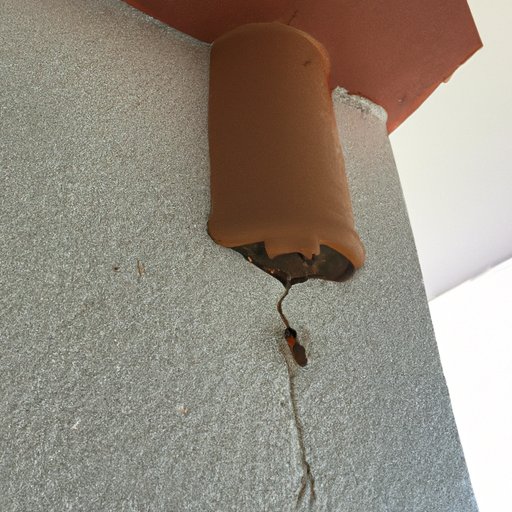Introduction
Termites are small insects that can cause significant damage to homes and other buildings. They feed on wood, paper, and other cellulose materials, which can lead to structural instability and expensive repairs. It’s important to identify and treat a termite infestation early to avoid long-term problems.

Analyzing the Average Cost of Termite Treatment Across Different Regions
According to HomeAdvisor, the average cost of termite treatment in the United States is $1,835, with most homeowners spending between $1,072 and $2,749. However, the cost can vary significantly depending on geographic region. For example, the average cost of termite treatment in California is $2,300, while in Florida it is $1,700. In Texas, the average cost is $1,800.

Examining the Factors That Influence Termite Treatment Costs
The cost of termite treatment is affected by a number of factors, including:
- Types of termites present: Different types of termites require different types of treatment, so the cost of treatment will depend on the species of termite present.
- Size of the infestation: The larger the infestation, the more time and materials required for treatment, which can increase the cost.
- Degree of structural damage: If the termites have caused significant structural damage, more extensive repairs may be necessary, which can drive up the cost of treatment.
- Type of treatment used: Different treatments have different costs associated with them. For example, chemical treatments are generally less expensive than fumigation.
- Experience of the professional: Highly experienced professionals may charge higher rates than those with less experience.
Comparing DIY vs Professional Termite Treatment Costs
Do-it-yourself termite treatments can save money compared to professional treatments, but they come with certain risks. According to the University of Georgia College of Agricultural and Environmental Sciences, “DIY termite control is not recommended because it is difficult to achieve complete coverage of all infested areas.” Additionally, DIY treatments may not be effective against certain species of termites. On the other hand, professional treatments are generally more effective and can help prevent future infestations.

Investigating the Benefits of Regular Termite Inspections and Treatments
Regular inspections and treatments can help prevent costly termite damage. According to the National Pest Management Association, “[a]n ounce of prevention is worth a pound of cure when it comes to termites.” Regular inspections allow pest control professionals to identify and treat infestations before they become serious problems. Additionally, regular treatments can help prevent future infestations by creating a barrier around the home.
Exploring the Long-Term Financial Impact of Termite Damage
If left untreated, termite damage can become extremely expensive. According to the National Pest Management Association, “the average cost of repairing termite damage is over $3,000.” In addition to repair costs, there is also the potential for lost property value if the damage is severe enough. It’s important to take action quickly if you suspect an infestation.
Understanding the Different Types of Termite Treatment Available
There are several different types of termite treatments available. Chemical treatments involve applying a pesticide to the soil around the foundation of the building. Baiting systems involve placing bait stations around the perimeter of the building, which attract and kill termites. Fumigation involves sealing off the building and pumping it full of poisonous gas.
Reviewing the Pros and Cons of Various Termite Treatment Methods
Each type of termite treatment has its own advantages and disadvantages. Chemical treatments are relatively inexpensive and can be applied quickly. However, they may not be effective against certain species of termites. Fumigation can be effective against all species of termites, but it is expensive and requires the occupants of the building to vacate during the treatment process. Baiting systems are generally considered to be the safest and most effective method of termite control, but they can be slow to work.
Conclusion
Termite treatment costs can vary significantly depending on geographic region, the size of the infestation, and the type of treatment used. Do-it-yourself treatments can save money, but they may not be effective against certain species of termites. Regular inspections and treatments can help prevent costly damage, and there are several different types of termite treatments available, each with its own advantages and disadvantages. Understanding the factors that influence cost, as well as the benefits and long-term financial implications of termite damage, is essential for making informed decisions about termite treatment.
(Note: Is this article not meeting your expectations? Do you have knowledge or insights to share? Unlock new opportunities and expand your reach by joining our authors team. Click Registration to join us and share your expertise with our readers.)
